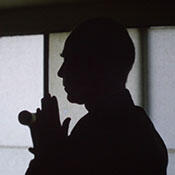 The Chinese Chan, Korean Son, and Japanese Zen traditions emphasize meditation practice. In addition, other practices are commonly used, such as the presentation of koans, or questions given by a master to a student, intended to break students free of conceptualizing thoughts that are obstacles to enlightenment.
The Chinese Chan, Korean Son, and Japanese Zen traditions emphasize meditation practice. In addition, other practices are commonly used, such as the presentation of koans, or questions given by a master to a student, intended to break students free of conceptualizing thoughts that are obstacles to enlightenment.
Japanese zen and Korean son are identical to the Chinese word chan, which is in turn derived from the Indian Sanskrit word dhyana. In English, all these words can be roughly translated as “meditation.” The monastic Zen tradition emphasizes that the realization of clear attention cannot be learned from studying scripture. What counts is “a special transmission outside the scripture.” It is said that once the Buddha, without saying a word, twirled a flower in his hand. The monk Kashyapa thereupon was enlightened, and so began this special transmission from teacher to student, mind to mind.
The Soto school of Zen Buddhists emphasize sitting, called zazen. “An inch of sitting,” they say, “is an inch of Buddha.” Such practice is not to “get somewhere,” but to realize fully where one is. As the Soto teacher Shunryu Suzuki, so influential in the formation of the Zen community in San Francisco, put it, “If you think you will get something from practicing zazen, already you are involved in impure practice. . . . When you practice zazen, just practice zazen.”
The Rinzai Zen tradition also includes koans in meditation practice. A koan is a question or problem given by a Zen master to a student. Examples include: “What is the sound of one hand clapping?” “Who is the Buddha?” “What was your original face before your parents were born?” Such questions confound the mind and its habits of thinking only in terms of logic, dualisms, and words. The question is put by the Zen master in the regular master-student interview, testing the student’s ability to move beyond dualistic thinking. “Who is the Buddha?” There are many answers but no “right answer.” The answer is in the clarity and immediacy of mind, not the thought or word. “Three pounds of flax.” “The bamboo grove at the foot of Chang-lin hill.” “He is no Buddha.”
The Korean Son tradition called Chogye was made popular in America by Zen Master Seung Sahn, who also taught koan or, in Korean, kong-an practice. He speaks of the “Don’t-know mind.” In meditation practice, when thought arises, “Put it down!” he said. “Too much thinking, put it down.” “Don’t know. Don’t know. Don’t know…” became the mantra of the many American followers who were wholly preoccupied with thinking and knowing. In the highly interactive Dharma teaching of Son Master Seung Sahn, kong-an practice developed a distinctively American form.
A Yale University professor recalls his first meeting with Zen Master Seung Sahn: “I remember in the first interview he did the whole number and held up the stick and said, ‘This stick and your mind. Are they the same or different?’ And I knew that if I said the same, he would hit me, and I knew if I said different he would hit me. But then he whacked the floor. For me, that was a really powerful teaching. So I was happy to go in there for many sessions after that and beat the hell out of the floor, because it was a way of cutting off that kind of searching thinking.”
A traditional Korean Son kong-an tells the story: “A monk once asked Joju, ‘I have just entered the monastery. Please teach me, Master.’ Joju said, ‘Did you have breakfast?’ ‘Yes,’ replied the monk. ‘Then,’ said Joju, ‘wash your bowls.’ The monk was enlightened.”